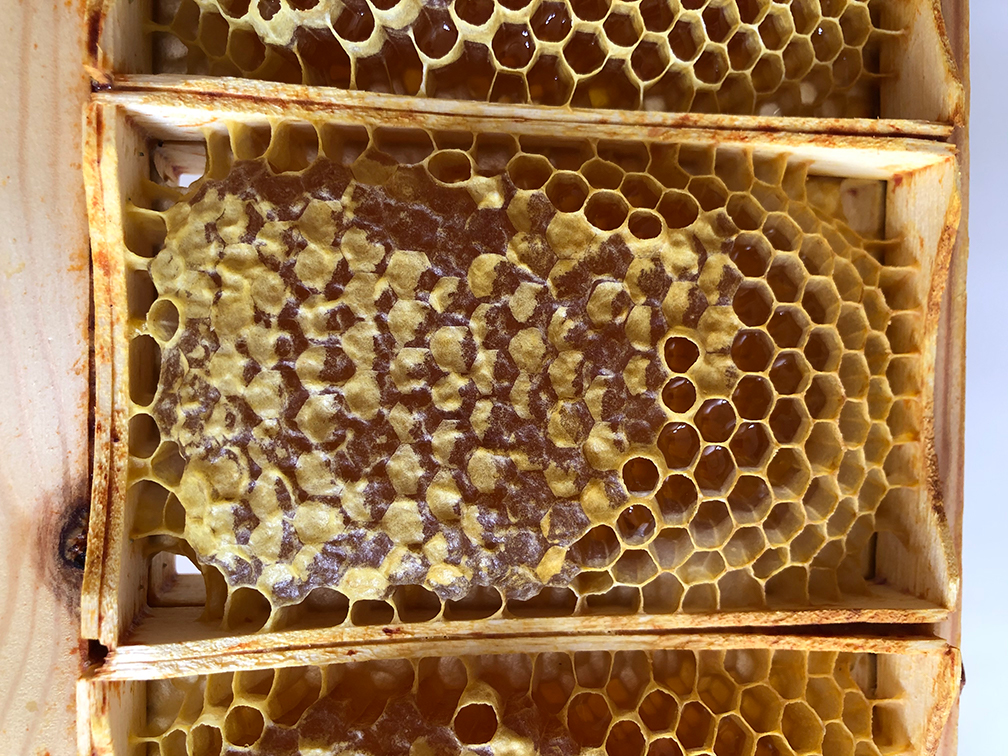Bee Blog - November 2020
My late Father had a saying which was “be careful what you wish for”. This came to mind recently after I had been talking to one on my fellow villagers who wanted to buy some “creamed honey” from me for her Mother who preferred it to “runny honey”. I had to explain to her that the bees had not produced any creamed honey this year as this came from oil seed rape nectar and that there had not been any fields of oil seed rape within the bees flying range.
I didn’t think much more about the lack of oil seed rape in my vicinity until I was watching an episode of the BBC’s Country File programme on the television where “Adam” was talking about this years harvest. He explained that it wasn’t just in my area where there was less oil seed rape fields this year, it was happening nationally. Farmers had decided not to plant the crop as it was not worth their while financially. The reason for this was the flea beetle. There had been a big upsurge in this beetle and it had been decimating crops reducing yields in some cases by two thirds.
Farmers had usually treated crops with neonicotinoids to control the beetle but with the recent ban to protect bees and pollinators generally, the beetle had made the growing of oil seed rape less financially viable than other crops. This of course means that there was now less rape seed oil being produced in the country than the country needed and it had to be imported. It was reported that much of the imports are likely to come from countries where there has been no ban on neonicotinoids. Be careful what you wish for indeed.
My late Father had another saying which was “as one door closes another opens”. I may not have been able to produce creamed honey this year but I did produce a new product for sale: comb honey. All honey was “comb honey” until 1865. Honey was either eaten as honeycomb or the honeycomb was crushed and filtered to separate out the honey from the wax cells. This was, of course, a very destructive process. Each season the bees had to spend some considerable time making new comb to replace what the beekeeper had removed the previous year.
The turning point came with the invention of the removable frame, invented in 1852. Instead of letting the bees decide where they made the honeycomb in the hive, the bees were encouraged to construct their comb within a timber frame that hung at a set distance from the next frame within the hive. With minor alterations this is still the method we use today. In my British National hives I have ten 14x12 inch frames in each hive brood box. Slightly small super frames are then placed above the brood box for the bees to store the honey in.
In 1865 a clever former Austrian Army Officer, Franz Hruschka, realised that if the removable frame was spun around, centrifugal force could be used to separate the honey from the frame whilst still retaining the cells of the honeycomb in the frame for use the next season. This is how the majority of honey is now produced few people produce comb honey in developed regions.
Eating comb honey however still remains popular today with many people. It is the closest to the natural product that can be achieved and is thought by many to have considerable health benefits.
The simplest way for the beekeeper to produce comb honey is to cut out the honeycomb from a a frame in a super and package it for sale. This however can be a somewhat messy process. I therefore chose a system based on the original idea of getting the bees to use removable frames. The system I chose uses a series of smaller sub frames which fit into a super frame. The bees are left to construct their honeycomb within the sub frames. When these sub frames are full they are cut out, my photograph this month, without the need to cut into honeycomb, a far cleaner process.
